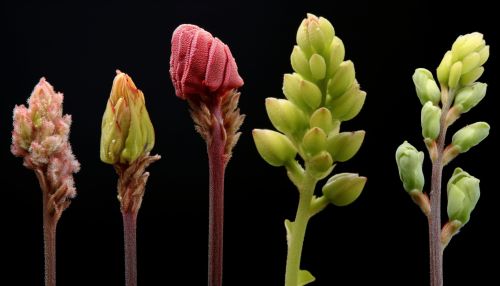The Science of Plant Phenology and Climate Change Interactions
Introduction
Phenology, the study of periodic plant and animal life cycle events, is intrinsically linked to seasonal and interannual variations in climate. Plant phenology specifically refers to the timing of such events in plants' life cycle as budding, flowering, and fruiting. These events are influenced by environmental cues, particularly temperature and precipitation. As such, plant phenology serves as a sensitive indicator of climate change and its impacts on biological systems.


Plant Phenology
Plant phenology is a sub-discipline of phenology that focuses on the study of timing of events in the life cycle of plants. These events, known as phenophases, include the onset of leafing, flowering, and fruiting. The timing of these events is largely determined by environmental factors such as temperature, light, and moisture.
Phenophases
Phenophases, the observable stages in the life cycle of a plant, are the primary focus of plant phenology. These stages include leafing, flowering, and fruiting among others. The timing of these phenophases is influenced by a variety of environmental factors, but temperature and day length are the most significant.
Environmental Factors
Environmental factors play a crucial role in determining the timing of phenophases. Temperature and day length are the most significant factors, but precipitation, soil moisture, and other factors can also influence plant phenology.
Climate Change and Plant Phenology
Climate change, particularly global warming, has a profound impact on plant phenology. Rising temperatures can lead to earlier onset of spring phenophases such as leafing and flowering. This shift in timing can have cascading effects on ecosystems, affecting interactions between plants and their pollinators, predators, and competitors.
Effects of Temperature Increase
Rising temperatures due to climate change can cause shifts in the timing of plant phenophases. Many studies have reported earlier onset of spring phenophases such as leafing and flowering in response to warmer temperatures. This can lead to mismatches in timing between plants and their pollinators, potentially affecting plant reproduction and survival.
Effects of Altered Precipitation Patterns
Climate change can also alter precipitation patterns, which can impact plant phenology. Changes in the timing and amount of rainfall can affect the onset of plant phenophases, particularly in regions where water availability is a limiting factor.
Implications of Changes in Plant Phenology
Changes in plant phenology due to climate change can have far-reaching implications. These changes can affect ecosystem processes, biodiversity, and human societies.
Ecosystem Processes
Changes in plant phenology can affect ecosystem processes such as nutrient cycling and energy flow. For instance, earlier leafing and flowering can extend the growing season, potentially increasing carbon uptake by plants.
Biodiversity
Shifts in plant phenology can also impact biodiversity. Changes in the timing of flowering, for example, can disrupt interactions between plants and their pollinators, potentially leading to declines in pollinator populations and changes in plant community composition.
Human Societies
Changes in plant phenology can also have direct and indirect impacts on human societies. For example, earlier flowering of fruit trees due to warmer springs can lead to crop losses if the flowers are damaged by late frosts. Indirectly, changes in plant phenology can affect human societies by altering ecosystem services such as pollination and carbon sequestration.
Conclusion
The study of plant phenology and its interactions with climate change provides valuable insights into the impacts of climate change on biological systems. As climate change continues to alter the timing of plant life cycle events, understanding these changes and their implications is crucial for biodiversity conservation and ecosystem management.
